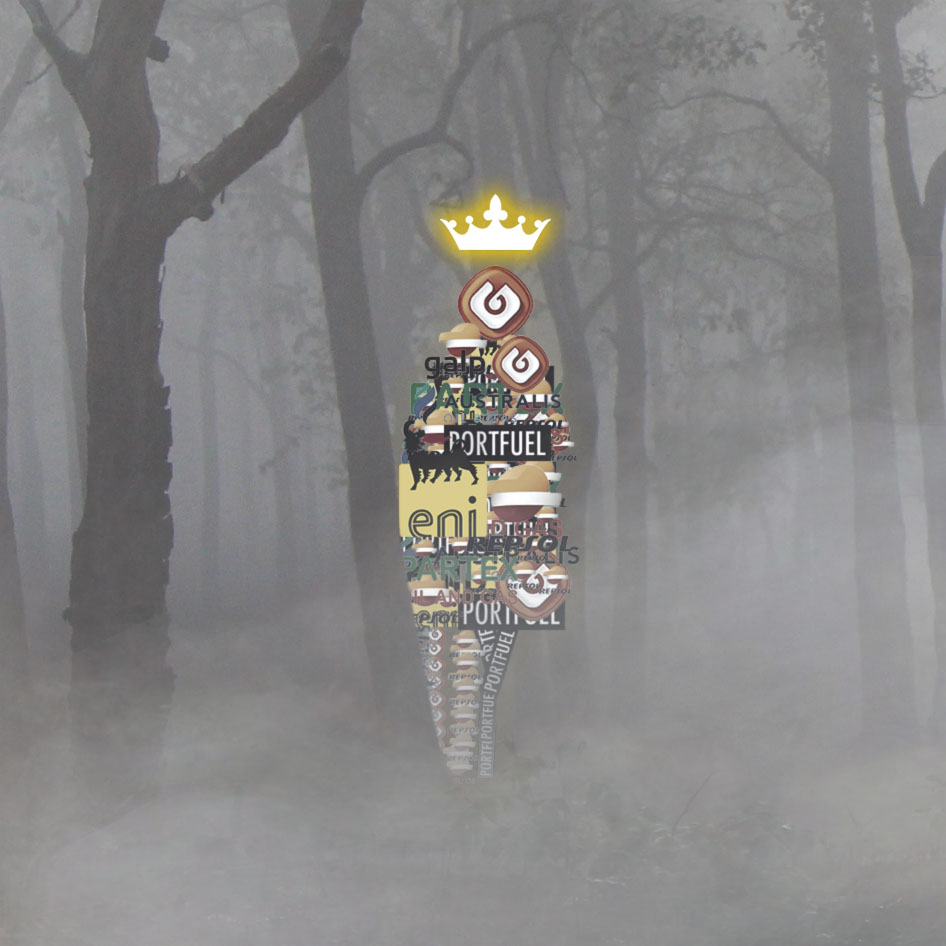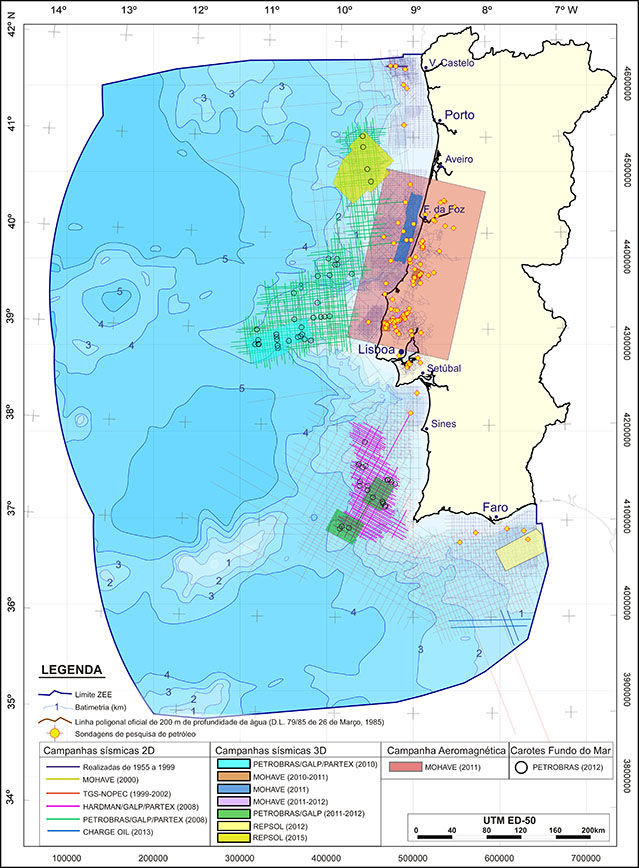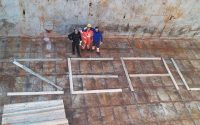Portugal // Country targeted for fracking by gas and oil corporations~ 5 min

A joke lost in translation. In 1578, the last king of the Avis dynasty, Sebastião I, got himself and the whole nobility of Portugal killed in Morocco trying to recapture the glory days of the Reconquista. He lives on as a legend: that on a foggy day, when Portugal needs him most, this most incompetent of rulers shall return to save the nation. Here pictured as fossil fuel companies’ logo golem.
News are spreading more or less everywhere about gas and oil concessions and their associated inflow of investment into the country along with employment creation. But investment for whom, with what economic incentives or tax exemptions and at what environmental cost? “Low cost and exploitation in land area with minimal workforce needs” and “the absence of government participation in the process”, were some of the answers already given by the companies that want to invest in the country. So we already know there will be no jobs or oversight, but there are still no explanations about the environmental impacts for a country that is being put up for sale to the likes of Shell, Galp, ENI, Australis, Portfuel, Repsol and Partex; which will devour all and leave nothing behind.
At this moment, according to the Regulatory Entity for the Fuel Market (ENMC), there are five contracts in development: two concessions in the Lusitanian basin and three in the Alentejo basin.

In the Lusitanian basin, Australis Oil & Gas signed two contracts in 2015 with the Portuguese state for prospection, research, development and extraction of oil and natural gas. Two of these contracts – “Batalha” and “Pombal” – aim for 8 years of extraction on 2.500 km2 of land area (called onshore) of continental territory which includes the cities of Coimbra, Leiria and Santarém). It was under these contracts that Australis delivered a document to the State with information on its intentions to move forward with a new hydrocarbon prospection and research plan for 2019 in Aljubarrota, at the Batalha Concession.
In fact, this is already the second drill hole in Aljubarrota. The first one happened in 2012 by Porto Energy, related to Mohave Oil and Gas, a Canadian company that enjoyed a ten year extraction program on land (onshore); until it went bankrupt in 2012. In this case, the only reason the extraction did not progress was simply because the gas column found at a depth of 3.200 meters was not economically feasible.

The technique to be potentially used after the prospection and during the extraction phase is called fracking – a non-conventional method – which consists of fracturing the rock in the subsoil using thousands of liters of water, a large amount of sand and highly toxic chemicals to extract the shale gas or oil trapped underground.
In the document presented by Australis for this new worksite, it is said that “potential impacts on the biophysical environment were identified (…) impacts of air quality, soil resources, noise and surface and groundwater resources, flora and fauna, cultural heritage, infrastructure and local economy “; and it is also admitted that “groundwater resources may be affected due to groundwater captation for the purposes of the project for the construction and operation phases in case it is not possible to acquire water from the local supply company as well as due to the potential pollution during the extraction phase “.
The law regulating the Environmental Impact Assessment says that prospecting projects using methods considered conventional can be exempted from evaluation because they are not yet extracting; even if there is an environmental impact and even if the prospection is aimed at moving towards extraction. The new hole in Aljubarrota has been subject to public consultation (article 3º/ 9 Decree-Law no. 152-B / 2017) – a non-binding and purely performative public participation instrument – to know whether or not it should be subject to EIA; but not all the necessary information was made available and those who participated in it only had the document produced by Australis itself.
This public consultation ended on 05/11/2018, and it is now up to the Portuguese Agency for the Environment (APA) to decide whether or not there will be an environmental impact assessment (AIA), which is essential to figure out the already foreseen and cited impacts – in a very superficial way – by Australis.
The information on whether this operation will resort to groundwater – an APA responsability – or directly to the public water supply network – a Water and Waste Services Regulatory Authority responsibility – was left out of this public consultation; as well as in what terms it will do so and what will be the local impact. It’s “Law as usual” and everything indicates that this public consultation will have the same purpose as the one that took place for the prospection in Aljezur: it was decided that there is no need for an environmental impact assessment and the prospection will be allowed to proceed.
There is a lot of confusion and lack of transparency in the negotiation process between the State and the economic agents; with some of the affected municipalities saying they were surprised by the news and others saying they were already informed in December 2015 during a meeting attended by all the mayors of the affected cities and the board of directors of ENMC.
Municipalities such as Pombal, Soure, Leiria, Marinha Grande, Batalha, Nazaré, Alcobaça, Porto de Mós, Caldas da Rainha, Ourém and Rio Maior are under prospect for future extraction and some clarification sessions have already been held to inform the population and to call for their mobilization, in an attempt to follow in the steps of the Anti-Fracking Movement in Spain, which in 2017 managed to prevent five companies from starting prospection and extraction in the country.




